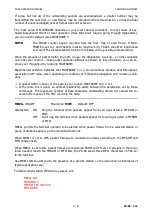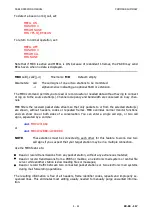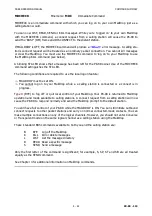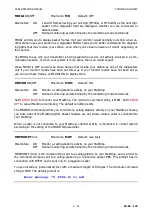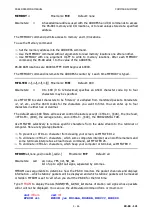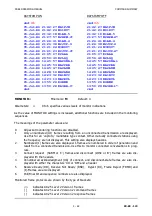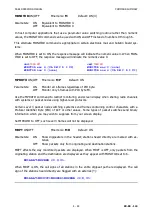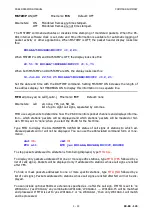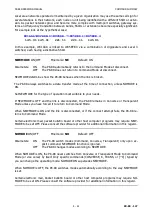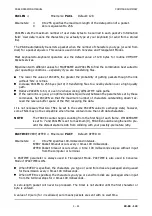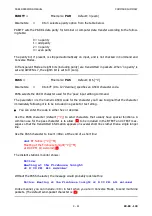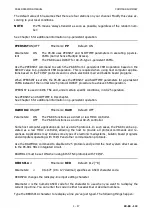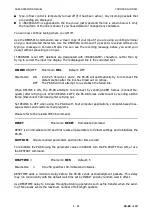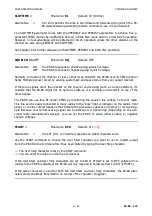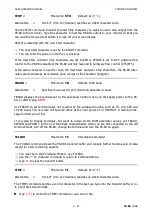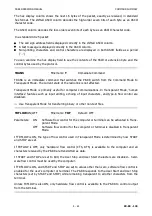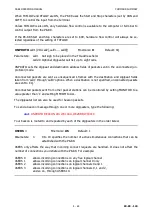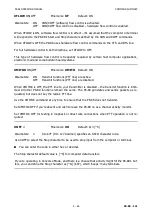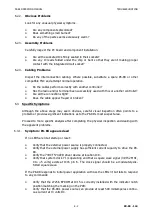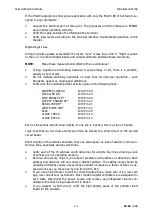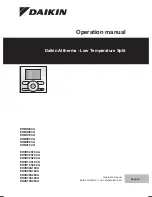
PK-88 OPERATING MANUAL
COMMAND SUMMARY
5 - 55
PK-88 - 130
PARITY
n
Mnemonic:
PAR
Default: 3 (even)
Parameters:
n
0 to 3 selects a parity option from the table below.
PARITY sets the PK-88's data parity for terminal or computer data transfer according to the follow-
ing table:
0 = no parity
1 = odd parity
2 = no parity
3 = even parity
The parity bit, if present, is stripped automatically on input, and is not checked in Command and
Converse Modes.
In Transparent Mode all eight bits (including parity) are transmitted in packets. When 'no parity' is
set and AWLEN is 7, the eighth bit is set to 0 (zero).
PASS
n
Mnemonic:
PAS
Default: $16 [^V]
Parameters:
n
0 to $7F (0 to 127 decimal) specifies an ASCII character code.
PASS selects the ASCII character used for the 'pass' input editing command.
The parameter
n
is the numeric ASCII code for the character you'll use to signal that the character
immediately following it is to be included in a packet or text string.
You can enter the code in either hex or decimal.
Use the PASS character (default
[^V]
) to send characters that usually have special functions. A
common use for the pass character is to allow
[
↵
]
to be included in the BTEXT and CTEXT mes-
sages so that the transmitted information appears on several short lines rather than a single longer
line.
Use the PASS character to insert <CRs> at the end of a short line:
cmd:
BT Notice:[^V][^M]
Meeting at the Firehouse tonight[^V][^M]
at 8:00 PM. All welcome![
↵
]
The distant station's monitor shows:
Notice:
Meeting at the Firehouse tonight
at 8:00 PM. All welcome!
Without the PASS character, the message would probably look like this:
Notice: Meeting at the Firehouse tonight at 8:00 PM. All welcome!
In like manner, you can include <CR> in text when you are in Converse Mode, to send multi-line
packets. (The default send-packet character is
[
↵
]
.)

